Toronto, the capital of the province of Ontario, is a major Canadian city along Lake Ontario’s northwestern shore. It’s a dynamic metropolis with a core of soaring skyscrapers, all dwarfed by the iconic, free-standing CN Tower. Toronto also has many green spaces, from the orderly oval of Queen’s Park to 400-acre High Park and its trails, sports facilities and zoo.
Indigenous peoples have travelled through and inhabited the Toronto area, located on a broad sloping plateau interspersed with rivers, deep ravines, and urban forest, for more than 10,000 years. After the broadly disputed Toronto Purchase, when the Mississauga surrendered the area to the British Crown,] the British established the town of York in 1793 and later designated it as the capital of Upper Canada. During the War of 1812, the town was the site of the Battle of York and suffered heavy damage by American troops. York was renamed and incorporated in 1834 as the city of Toronto. It was designated as the capital of the province of Ontario in 1867 during Canadian Confederation. The city proper has since expanded past its original limits through both annexation and amalgamation to its current area of 630.2 km2 (243.3 sq mi).
Toronto is a prominent centre for music, theatre,motion picture production, and television production, and is home to the headquarters of Canada’s major national broadcast networks and media outlets. Its varied cultural institutions, which include numerous museums and galleries, festivals and public events, entertainment districts, national historic sites, and sports activities,attract over 43 million tourists each year. Toronto is known for its many skyscrapers and high-rise buildings, in particular the tallest free-standing structure on land outside of Asia, the CN Tower.
1.Ripley’s Aquarium of Canada

Ripley’s Aquarium of Canada is a public aquarium in Toronto, Ontario, Canada. The aquarium is one of three aquariums owned-and-operated by Ripley Entertainment. It is located in downtown Toronto, just southeast of the CN Tower.
A Ripley’s Aquarium was originally planned in 2004 to be built in Niagara Falls, Ontario, next to what is now Great Wolf Lodge around 2007, but plans fell through and Ripley’s eventually relocated to Toronto. Construction began on the attraction in August 2011 with a final cost approaching CA$130 million. The aquarium opened to the public in October 2013.
Ripley’s Aquarium has been the target of animal liberation groups such as TARA (Toronto Aquarium Resistance) and MAD (Marineland Animal Defence), which claim animal captivity is synonymous with animal abuse. They regularly conduct protests and demonstrations at the facility. Prominent animal conservationist Bob Timmons has also publicly spoken out against Ripley Aquarium’s capture of endangered tiger sharks.
2.Day Trip to Niagara Falls
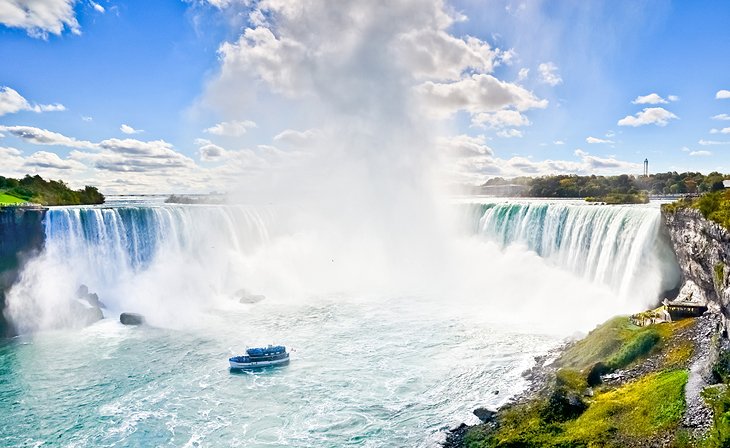
Niagara Falls (/naɪˈæɡərə/) is a group of three waterfalls at the southern end of Niagara Gorge, spanning the border between the province of Ontario in Canada and the state of New York in the United States. The largest of the three is Horseshoe Falls, which straddles the international border of the two countries. It is also known as the Canadian Falls.The smaller American Falls and Bridal Veil Falls lie within the United States. Bridal Veil Falls is separated from Horseshoe Falls by Goat Island and from American Falls by Luna Island, with both islands situated in New York.
Formed by the Niagara River, which drains Lake Erie into Lake Ontario, the combined falls have the highest flow rate of any waterfall in North America that has a vertical drop of more than 50 m (160 ft). During peak daytime tourist hours, more than 168,000 m3 (5.9 million cu ft) of water goes over the crest of the falls every minute. Horseshoe Falls is the most powerful waterfall in North America, as measured by flow rate. Niagara Falls is famed for its beauty and is a valuable source of hydroelectric power. Balancing recreational, commercial, and industrial uses has been a challenge for the stewards of the falls since the 19th century.
3.See the Animals at the Toronto Zoo
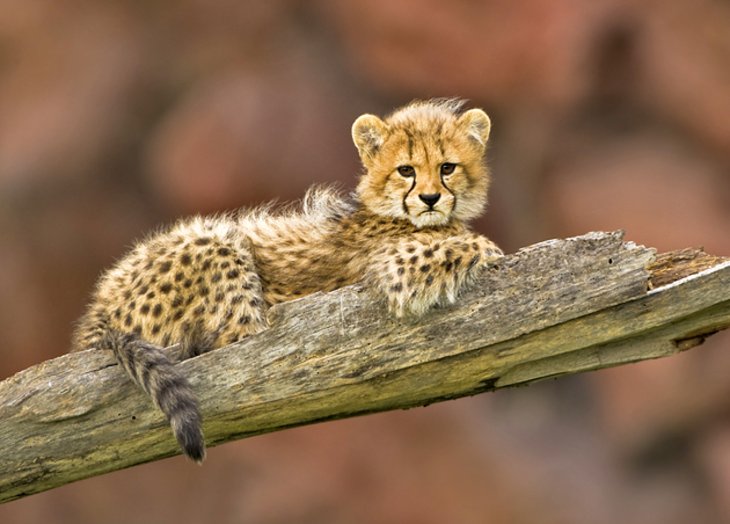
The Toronto Zoo is a zoo located in Toronto, Ontario, Canada. Encompassing 287 hectares, the Toronto Zoo is the largest zoo in Canada. It is divided into seven zoogeographic regions: Indo-Malaya, Africa, Americas, Tundra Trek, Australasia, Eurasia, and the Canadian Domain.
The zoo is a corporation owned by the municipal government of Toronto. Founded by John Cameron Egan and business partner, Hugh A. Crothers, an industrialist who became the first Chairman of the Metro Toronto Zoological Society in 1966, the zoo opened on August 15, 1974, as the Metropolitan Toronto Zoo. The word “Metropolitan” was dropped from its name when the individual municipalities that make up the Municipality of Metropolitan Toronto was amalgamated into the current city in 1998. The zoo is located near the Rouge River on the western border of Rouge Park in the city’s east end district of Scarborough.
Opened in 1998, the African Savanna became the zoo’s largest expansion in history. The African Savanna combined with the African Rainforest Pavilion encompasses most of the southern third of the zoo. The African Savanna featured species include white lions, Grévy’s zebras, olive baboons, greater kudus, cheetahs, white rhinoceroses, Common hippopotamuses, spotted hyenas, watusi cattle, blue wildebeests, common elands, African penguins and Masai giraffes. The African Rainforest Pavilion holds the world’s largest indoor gorilla exhibit, home to Charles, as well as dozens of other African species, including meerkats, red river hogs, dwarf crocodiles, and pygmy hippopotamuses. The south side of the pavilion was completely refurbished in 2011 and showcases ring-tailed lemurs and Aldabra giant tortoises.
4.See the View from the CN Tower
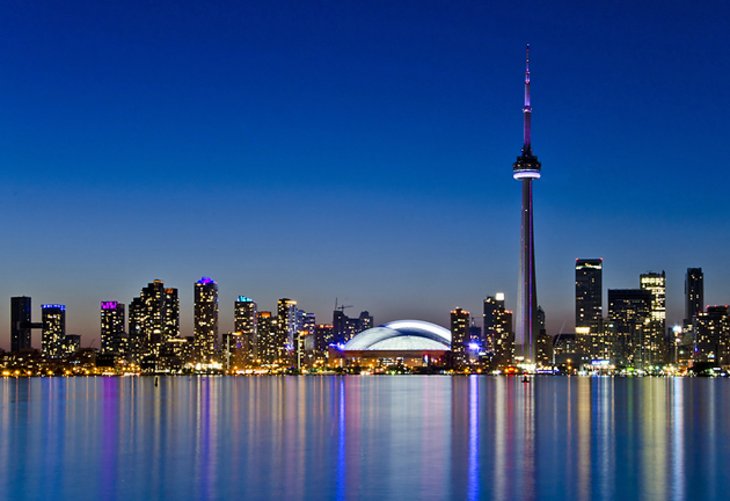
The CN Tower is a 553.3 m-high concrete communications and observation tower in downtown Toronto, Ontario, Canada. Built on the former Railway Lands, it was completed in 1976. Its name “CN” referred to Canadian National, the railway company that built the tower.
The CN Tower held the record for the world’s tallest free-standing structure for 32 years, from 1975 until 2007, when it was surpassed by the Burj Khalifa, and was the world’s tallest tower until 2009 when it was surpassed by the Canton Tower. It is currently the ninth-tallest free-standing structure in the world and remains the tallest free-standing structure on land in the Western Hemisphere. In 1995, the CN Tower was declared one of the modern Seven Wonders of the World by the American Society of Civil Engineers. It also belongs to the World Federation of Great Towers.
It is a signature icon of Toronto’s skyline and attracts more than two million international visitors annually. It houses several observation decks, a revolving restaurant at some 1,150 feet (350 m), and an entertainment complex.
5.Wander through St. Lawrence Market
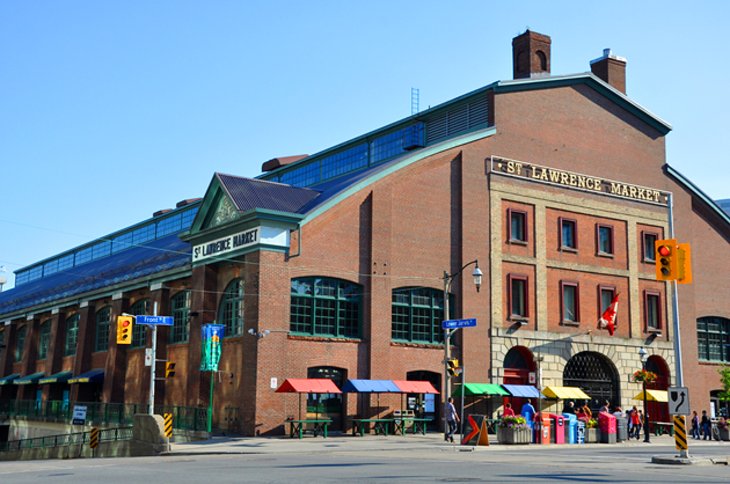
The St. Lawrence Market South building is a major public market building in Toronto, Ontario, Canada. It is located on the southwest corner of Front and Lower Jarvis Streets. Along with the St. Lawrence Market North and St. Lawrence Hall, it comprises the St. Lawrence Market complex.
St. Lawrence Market was first established in the early 19th century, originating from a proclamation that established a designated area near King Street and New Street (later renamed Jarvis Street) for a public market in 1803. The first buildings erected for the market emerged in 1814, with the first permanent structures built in 1820. The first permanent market building was later replaced in 1831 with the first St. Lawrence Market North building. The market also served as one of four post offices in York prior to 1834. The building was damaged after the Great Fire of Toronto of 1849, and was replaced with a new building in 1851. The market was expanded in the early 1900s, with portions of the former city hall of Toronto being integrated into a new building, opened as St. Lawrence Market South in 1902, and a new matching building erected to replace the north building in 1904. The north building was later replaced with a new building in 1968. In 2016, the north building was demolished to make way for a new building.
The St. Lawrence Market houses a variety of vendors selling various food products, flowers, and specialty items. The St. Lawrence Hall was built in Toronto in 1850 and served as a public meeting place and a concert venue.
If you’ve been shopping or touring nearby, this is an excellent spot to stop in for a bite to eat or to relax with friends over a cup of coffee. In the summer, outdoor patios on elevated spaces allow you to soak up some of the warm sunshine.
The hall was restored in 1967 but has retained much of its old charm. The building provides a unique atmosphere for the market and is also occasionally used for film and television shoots. The interior features a grand staircase and a gas-lit chandelier.
6.Tour CasaLoma
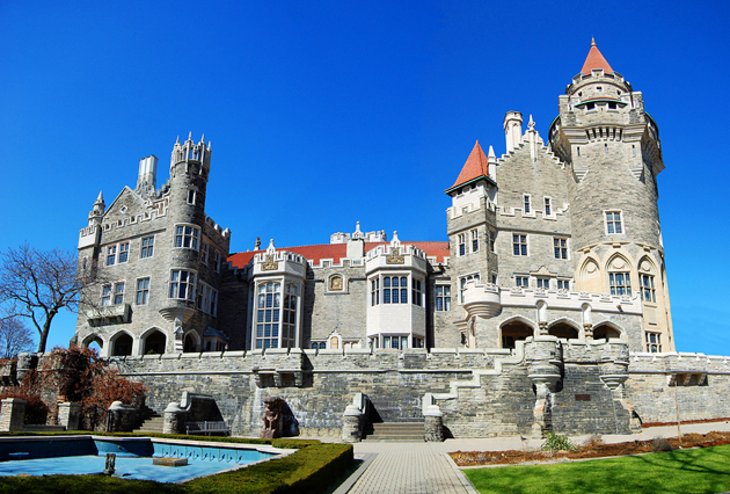
Casa Loma is a Gothic Revival castle-style mansion and garden in midtown Toronto, Ontario, Canada, that is now a historic house museum and landmark. It was constructed from 1911 to 1914 as a residence for financier Sir Henry Pellatt. The architect was E. J. Lennox, who designed several other city landmarks.
Standing in beautifully kept grounds, Casa Loma is an extraordinary building somewhat reminiscent of a medieval castle. It was originally constructed in 1914 for Sir Henry Pellatt, an eccentric Canadian multi-millionaire who was among the first to recognize and exploit the money-making potential of Niagara Falls.
With close to 100 rooms, including three dozen bathrooms, the house is now a museum. Visitors can take a look back in time to a period of European elegance and splendor. Canada’s foremost castle is complete with decorated suites, secret passages, an 800-foot tunnel, towers, stables, and five acres of estate gardens.
A prime example of modern Toronto’s commitment to its rich history, Casa Loma was first built in 1914 by financier Sir Henry Pellatt. The castle located in midtown Toronto, is now owned by the City of Toronto and is regarded as a treasured heritage landmark. Today, operated by the Liberty Entertainment Group, Casa Loma is one of Toronto’s top tourist attractions and hospitality venues. Each year over 650,000 visitors tour Casa Loma and the estate gardens. A perfect backdrop for special occasions, Casa Loma also plays host to over 250 private events annually. The unique architecture has also made it a highly desirable location for film, television and photo shoots.”
7.Stroll through Kensington Market
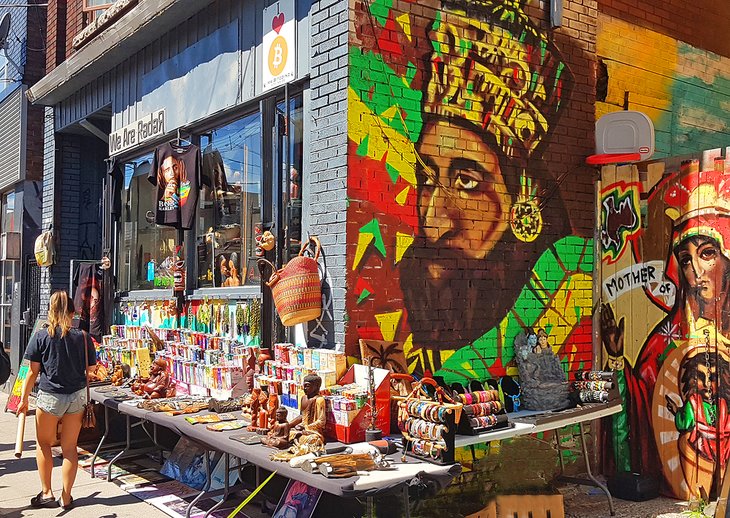
Kensington Market is an area of Toronto with a bohemian and multicultural feel. On a typical summer’s day, the smell of incense wafts through the air; music from a street-side musician can be heard; and the numerous retailers, who mostly operate out of old two-story brick homes, set up their goods on designated areas of their deck-covered lawns or on the sidewalks. This is a fantastic area for a stroll.
The shops, many of which display colorful murals and street art, sell everything from Tibetan blankets to jewelry, bags, purses, and vintage clothing, and there are even a couple of cheese shops. Restaurants and coffee shops here offer a multicultural festival of choices that include Jamaican, Mexican, Tibetan, or more basic options like pizza or smoothies. You can also find natural food stores, tattoo shops, and fruit and vegetable stands.
The annual “Kensington Market Festival of Lights”, which is now known as the Kensington Market Winter Solstice Festival, is celebrated as a parade on the streets of Kensington Market during the Winter Solstice in December. This carnival parade of giant puppets, firebreathers, stiltwalkers and samba musicians was created and founded by Ida Carnevali in 1987 as a way of beckoning the return of the sun on the longest night of the year. Artists and groups such as the Samba Squad, Shadowland Theatre, Clay & Paper Theatre, Richard Underhill, the Befana Choir and the Kensington Horns participate in this event. For many years, the parade ended in a post-sunset concert and spectacle in Bellevue Square; since 2009, the parade has ended at Alexandra Park to handle the larger crowd.
The Pedestrian Sundays festival is a car-free festival where the streets close to cars in several Sundays in the summer. The festival ran for five years, attracting many people to party on the streets of Kensington Market, including bands, street foods, etc.
Bellevue Square Park hosts many concerts and festivals throughout late spring and summer. In addition, the Chiaroscuro Reading Series is held the second Tuesday of each month at Augusta House. Prominent science fiction, fantasy, and horror authors offer readings of their works.









